Sailing at Broad Reach: Beginner’s Essentials
Whether you’re new to sailing or looking to sharpen your skills, this how-to guide with helpful illustrations has you covered, helping you build a strong foundation for sailing at Broad Reach.
Whether you're planning to sail as a passenger or to learn how to sail, it's essential to grasp some fundamental sailing terms. Uninstructed individuals may struggle to understand and follow the captain's orders due to their lack of knowledge about sailing terminology. This article provides an essential guide to nautical terms, enabling effective communication while you're out at sea.
Sailing terminology serves a purpose—it helps sailors avoid misunderstandings while sailing.
For instance, if you merely say "on the left," the other person might not comprehend whether it refers to their left or your left.
So, here are the terms you need to learn first:
• Bow: The front of the boat.
• Stern: The back of the boat.
• Port: The left side of the boat.
• Starboard: The right side of the boat.
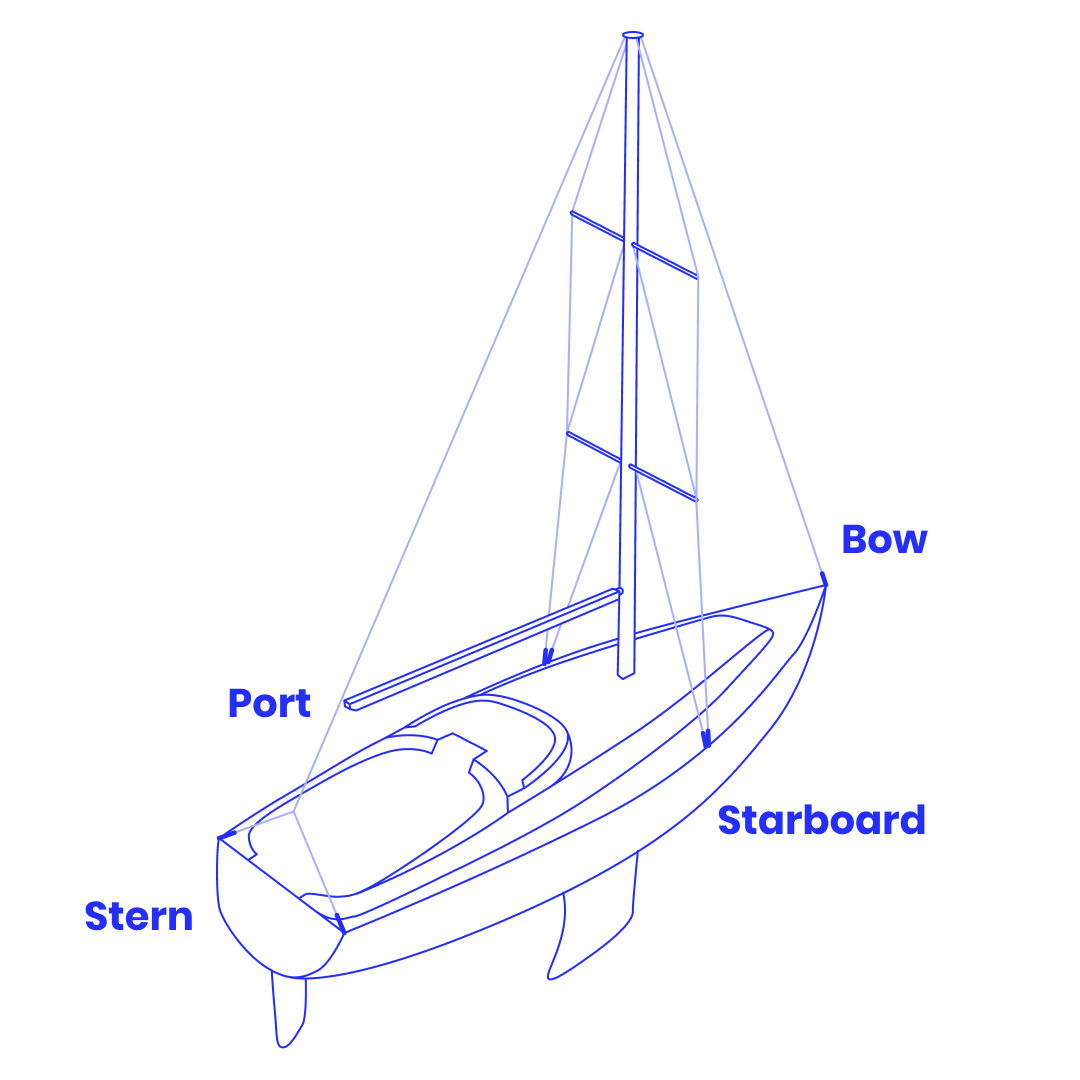
The sailboat's structural components, essential for its performance, have specific names and most sailboats share these common components, so it's wise to become familiar with them right from the start:
• Mast: A vertical pole that provides support for the sails.
• Boom: A horizontal pole whose position can be adjusted.
• Keel: A weighted fin at the bottom, providing stability.
• Rudder: A pivoting fin at the back, used for steering the boat.
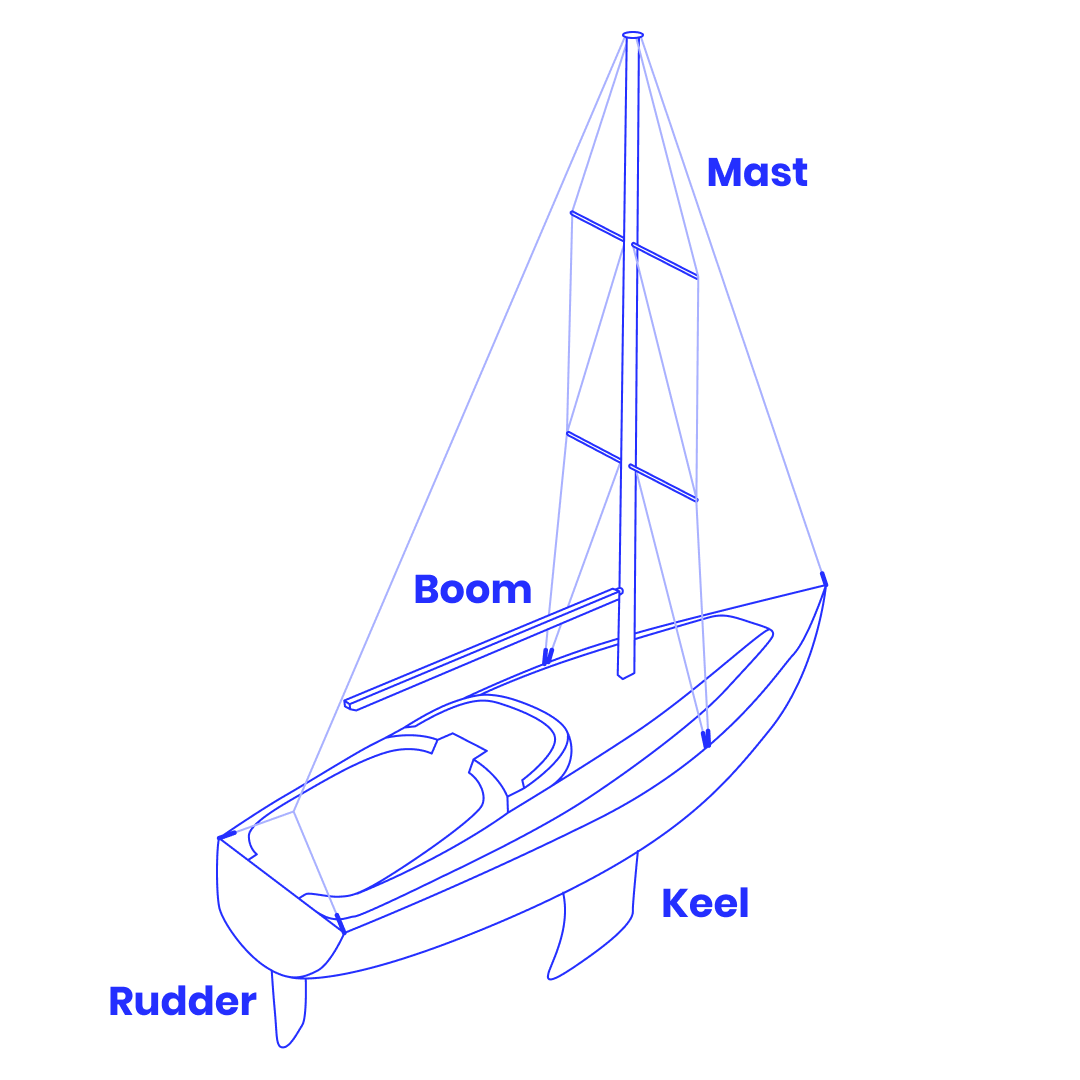
The following terms stand for the boat parts and controls, that are an integral part of everyday nautical communication and are essential to grasp:
• Deck: The upper flat surface of the hull, providing a walkable area.
• Cockpit: The hub from which you steer the boat and control the sails.
• Helm: A steering wheel, operated to navigate the boat.
• Tiller: A steering stick, that might be used instead of a helm.
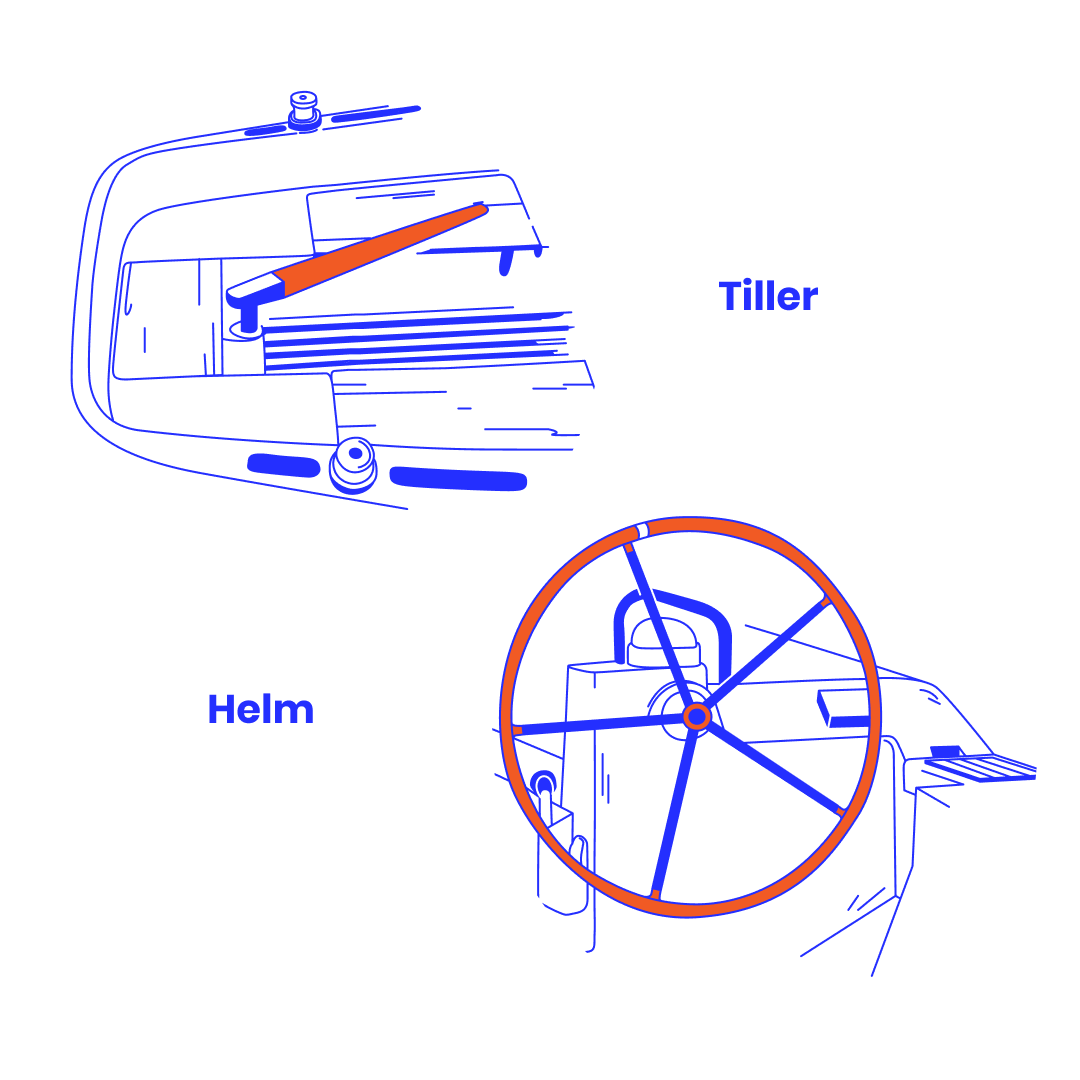
Sail names and types can vary based on the boat's design. Some boats feature several masts and many sails, but let's explore sail types found on the Bermuda sloop, a simple and widely used type of a boat:
• Headsail: The front sail which is also called the Jib.
• Mainsail: The rear sail that serves as the main sail.
• Spinnaker: Extra sail as a parachute in front of the boat.
• Gennaker: Extra sail which is basically a half spinnaker.
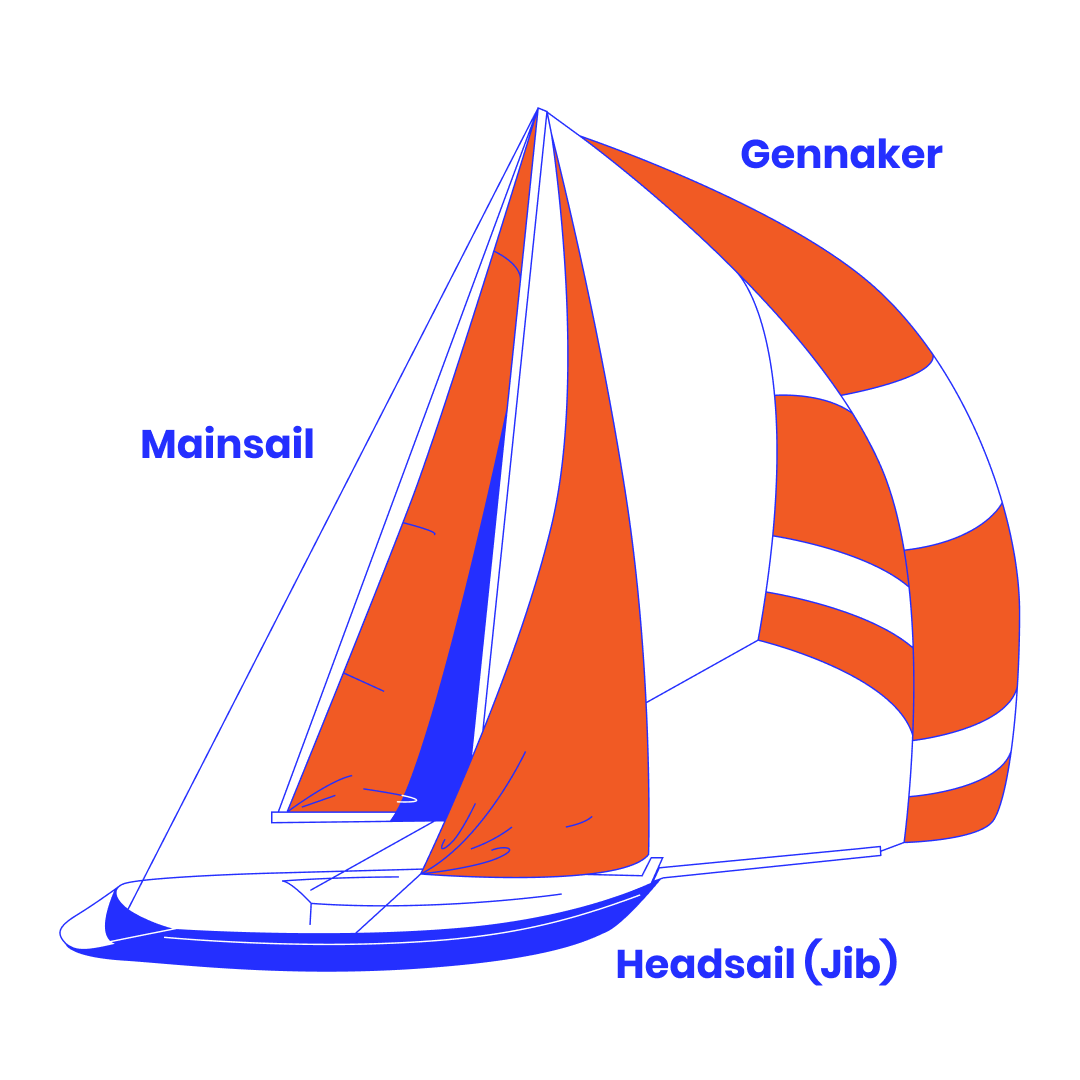
On the Bermuda sloop, two triangular sails are the default configuration. These sails have specific names for their corners and edges, ensuring clear communication during the operation of the boat:
• Head: The upper corner of the sail.
• Tack: The front corner of the sail.
• Clew: The rear corner of the sail.
• Luff: The leading edge of a sail.
• Leech: The back edge of a sail.
• Foot: The bottom edge of a sail.
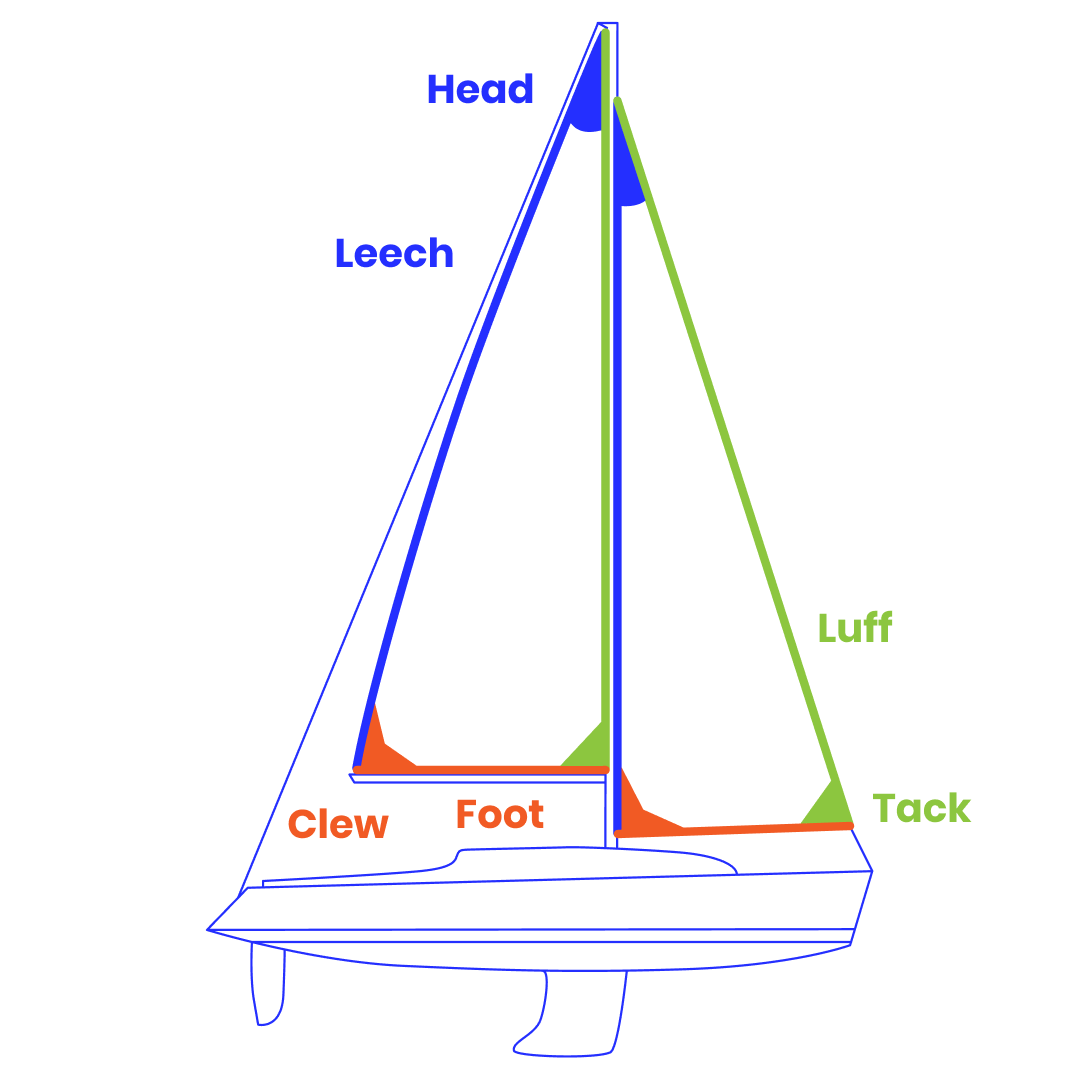
Sails are managed by lines (ropes), which are fastened to their corners. Pulling a line attached to the head raises the sail, while easing it allows the sail to lower under gravity.
The same principle applies to sail trim (position)—wind fills the sail and pushes it, while you control the sail's position by pulling or easing the corresponding line.
Here are the essential lines to be familiar with:
• Halyard: This line adjusts the sail's height.
• Topping Lift: Used to secure the boom from falling.
• Jib Sheet: Controls the position of the headsail.
• Main Sheet: Controls the position of the mainsail.
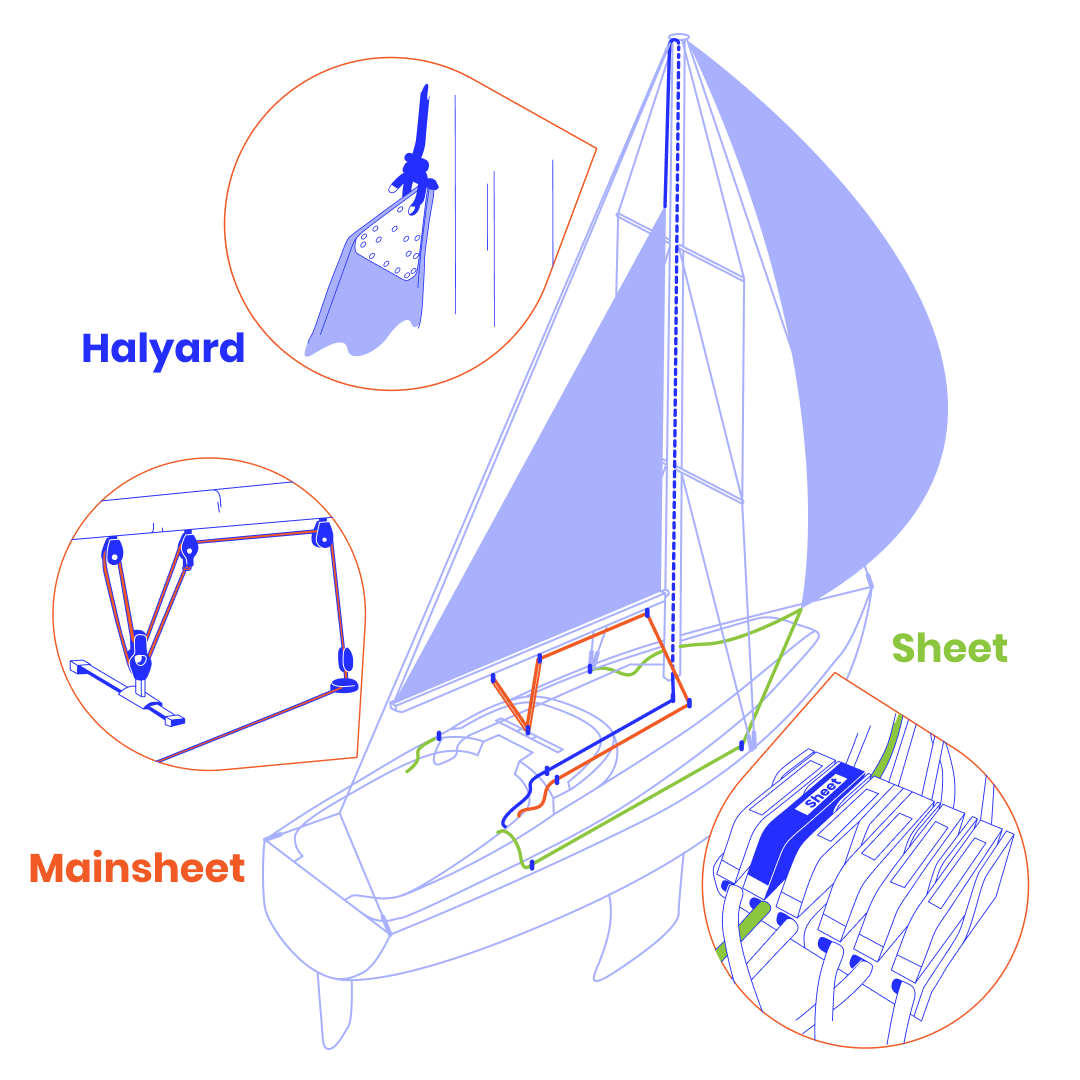
When the wind blows over the left side of the boat, it's referred to as a "Port tack." When the wind blows over the right side of the boat, it's referred to as a "Starboard tack."
Changing the tack can be accomplished with both the bow or stern into the wind:
• Tack: To tack means to turn the bow through the wind.
• Jibe: To jibe means to turn the stern through the wind.
Furthermore:
• Windward: The side of the boat which is facing the wind.
• Leeward: The side of the boat which is away from the wind.
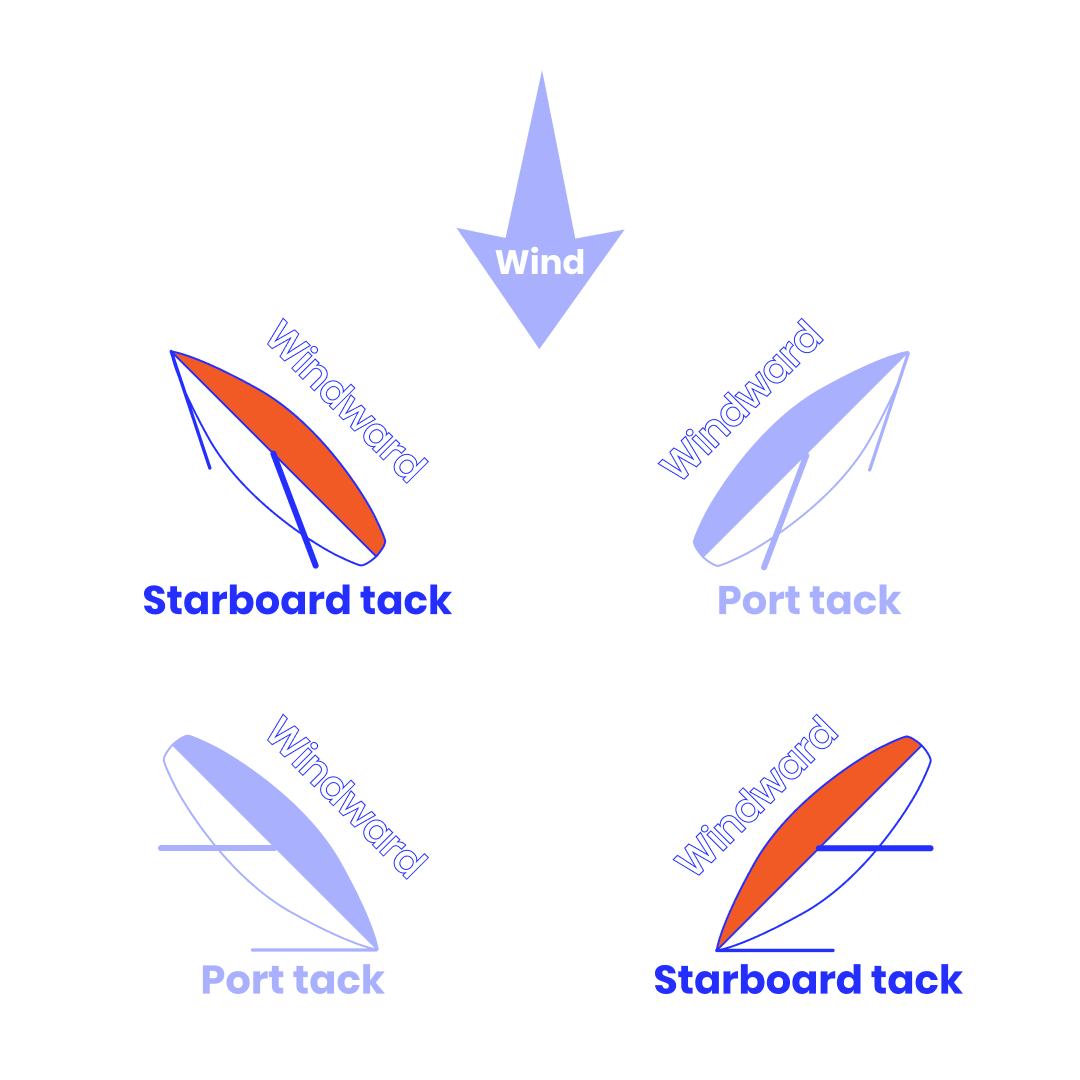
Dividing a 360-degree circle into 45-degree segments, you can identify eight fundamental points of sail. Each of these points describes a sailboat's course relative to the direction of the wind:
• In Irons: This is the situation when a boat is positioned directly into the wind, causing the wind to flow along both sides of the sails evenly. In this position, the boat is unable to sail.
• Dead Run: A boat is on a dead run when it sails directly in the direction of the wind. This is the opposite of being "in irons'' and is neither the most efficient nor the safest course.
The remaining six points are further divided into three on a port tack and three on a starboard tack:
• Close reach: The closest possible angle for sailing.
• Beam reach: The most efficient angle for sailing.
• Broad reach: The furthest safe angle for sailing.
By the way, the "beam" is the central, widest element of the sailboat's construction, so the beam reach means that the wind blows directly into the beam. Now it's easy to remember, isn't it?
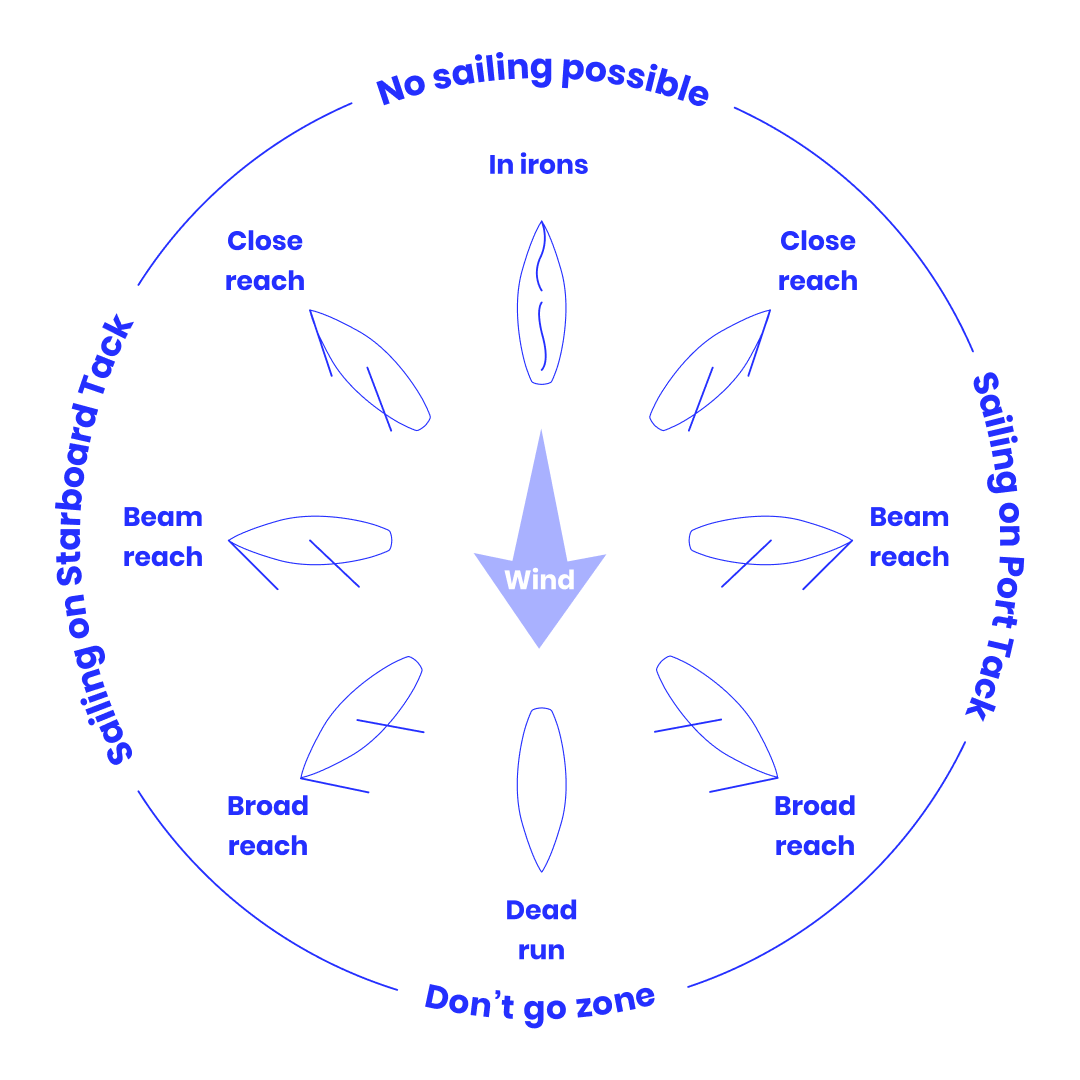
Don't be intimidated by the terminology—we're here to break it down into plain and simple terms. Download our app now and embark on a free sailing course designed for beginners. Whether you're a novice or looking to enhance your sailing skills, our app offers a user-friendly platform to kickstart your sailing adventure.
Receive email notifications whenever we publish new and exciting content, stay informed and inspired!
Learning to sail has never been this interactive and accessible. Explore our engaging sailing course today, it's free and fun! The mobile app is available on both iOS and Android
Receive email notifications whenever we publish new and exciting content, stay informed and inspired!